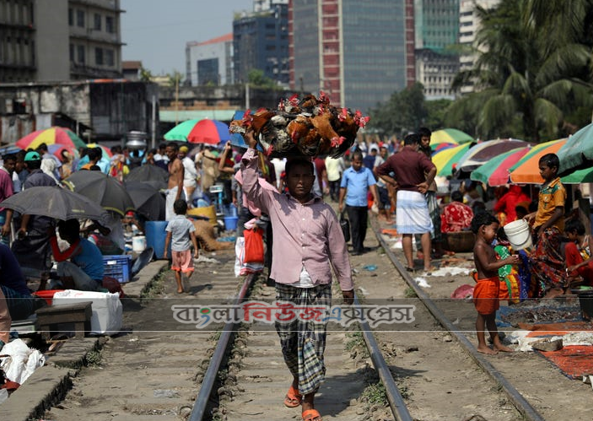Urbanisation is one of the leading global trends having a significant impact on health. The World Health Organization estimates that more than 70 percent of the world’s population will live in cities by the middle of this century. Unfortunately, these transformations are happening too quickly but in unplanned way and thus many municipalities are unable to find the proper balance necessary for preventing a range of symptoms from developing, which can leave a city rather sick and in turn impact the well-being of residents.
The ideal healthy and sustainable urban environment looks like this:
Transport — less than 500 metres (via paved footpath wide enough for a wheelchair) to a bus, train or tram stop with regular services of at least every 30 minutes, off peak.
Food and goods — less than 500 meters to shops.
Green space — less than 500 metres to parks.
Access — less than 30 minutes by mass transit to a range of employment, education, social and cultural opportunities; safe walking and cycling paths to a primary and secondary school.
Housing — a mix of housing types and prices, suitable for living, housing built, or adapted, using environmental principles; good outdoor and indoor air quality.
Social cohesion — a sense of community in the neighborhood; tolerant and safe environment.
Of course, just as not all of us humans were graced with the genetic and environmental assets that confer perfect health, not all urban development is ideal. In fact, the situation in many developing countries is quite different and sadly, ‘sick cities’ abound. However, like many humans of less than ideal physiology who commit to conditioning themselves and improving their health by employing scientific knowledge and planning, cities can take a similar approach. Here, we will discuss the scenario for developing countries like Bangladesh where the vast majority of people are still unserved by basic infrastructure and are already the least able to cope with the increasing impacts of climate change.
Huge challenges
“In general, urban populations are better off than their rural counterparts. They tend to have greater access to social and health services and their life expectancy is longer,” explains WHO Director-General Margaret Chan. “But cities can also concentrate threats to health such as inadequate sanitation and refuse collection, pollution, road traffic accidents, outbreaks of infectious diseases and also unhealthy lifestyles.”
Indeed, in developing countries, most of the urban population does not benefit from the “urban advantage” of better access to health care, as improvements in living conditions and health provision are not keeping pace with urbanisation. These city dwellers instead face what has been labelled as the “urban penalty”: deteriorating health status due to inadequate access to basic infrastructure or exposure to worsening environmental pollution. Additionally, the typically sedentary urban lifestyle of the growing middle class, with more convenient access to safe water and food, etc., creates new health risks such as diabetes and cardiovascular conditions.
South Asia’s cities are particularly vulnerable due to the additional impact of climate change on all sectors; human health, food production, infrastructure, water and ecosystems.
Bangladesh’s capital, Dhaka City, is one of the major cities of South Asia. With an estimated population of more than 15 million people, it is the largest city in Bangladesh and the 8th largest city in the world. It is also one of the world’s most densely populated cities.
water infrastructure lacking
Viral diseases and communicable diseases are increasing in Dhaka City due to poor hygiene and sanitation systems in the slums. Photo: Development Planning Unit University College London. Creative Commons BY (cropped).
Bangladesh has shown substantial success with respect to health and development over the past few years. Accomplishments include achieving Millenium Development Goal (MDG) 4 for the reduction of mortality amongst children under age 5 and making remarkable progress towards MDG 5 for improved maternal health.
However, the rapid growth of cities and towns is the greatest development challenge for the country. Over the past 40 years the proportion of the population living in urban areas in Bangladesh has increased from 5 percent to 28 percent, with estimates predicting that just under one third of the total population will live in urban areas by 2015.
The country’s growing cities and towns face challenges that include high percentages of people living in slums, high cost of living and dominance of the informal sector, inadequate basic services (especially water, sanitation and energy), unplanned urban and pre-urban expansion, social and political conflict over land resources, a high level of vulnerability to natural disasters and poor mobility systems. Thus, just as the size of the urban population is growing fast, so too is the scale of the challenge for urban health. Viral diseases and communicable diseases are increasing in Dhaka City due to poor hygiene and sanitation systems in the slums. In fact, in the country’s slums the mortality rate of children under 5 years old is almost double that of rural areas.
On top of that, air pollution is worsening. Bangladesh was ranked fourth among 91 countries with the worst urban air quality in the latest air pollution monitoring report by the World Health Organization. Data from the National Institute of Diseases of the Chest and Hospital shows that nearly seven million Bangladeshis suffer from asthma and more than half of them are children. In Dhaka alone, an estimated 15,000 premature deaths, as well as several million cases of pulmonary, respiratory and neurological illness are attributed to poor air quality, according to the Air Quality Management Project, funded by the government and the World Bank.
In recent years, rural to urban migration is a major factor in Bangladesh’s urbanisation and climate change is contributing on that front. In Kamrangirchar (a sub-district of Dhaka City) a huge number of migrants moved from the southern districts that are part of the Barisal Division of Bangladesh after disasters like November 2007’s Sidor cyclone, which killed more than 4,000 people, and cyclone Aila that hit in May 2009 and left 8,000 more missing and about 1 million homeless. Twenty-two percent of those affected by Aila moved to Dhaka and 78 percent moved to other cities close to their home.
শিক্ষা
- What is first language? Write your own word about the position of English language
- Write your own way about “implicit” and “explicit” learning by reading the text
- জাতীয় নিরাপত্তা গোয়েন্দা সংস্থা (NSI) সহকারী পরিচালক লিখিত পরীক্ষার প্রশ্ন- ২০১৯
- লক্ষ্য থেকে সরে যাওয়া বা লক্ষ্যচ্যূত হওয়া
- অষ্টম শ্রেণির বাংলাদেশ ও বিশ্বপরিচয় বইয়ের একাদশ অধ্যায় ‘মৌজা’র
- ৭ই মার্চের ভাষণের জন্য কোন ম্যাগাজিন বঙ্গবন্ধুকে ‘রাজনীতির কবি’ (পয়েট অব পলিটিক্স) আখ্যা দেয়?
- আমাদের সবসময় ব্যবহার করা ফোন কি শুরু থেকেই স্মার্ট ফোন ছিলো?? নিশ্চয়ই নয়
- অনার্স ৪র্থ বর্ষ ২০১৮- ইসলামিক স্টাডিজ, মার্কেটিং, প্রাণিবিদ্যা, মৃত্তিকা বিজ্ঞান বিষয়ের পুনর্নিরীক্ষার ফলাফল প্রকাশ।
- What is visual Communication and discuss is purposes?
- অষ্টম শ্রেণির বাংলাদেশ ও বিশ্বপরিচয় বইয়ের অষ্টম অধ্যায়ে ‘ব্লিচিং পাউডার’-এর কথা উল্লেখ আছে






